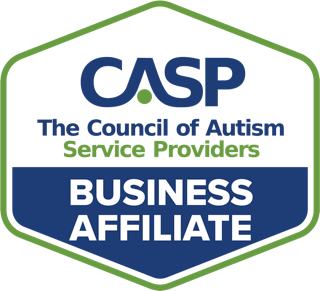Data discussed is based on prior version of the Medical Necessity Assessment (MNA) tool. MNA has been updated effective 7/15/2024.
This article is based on our recent webinar, Entrepreneurship in ABA: Best Practices for Determining Medical Necessity in Autism/ABA Treatment – Part 3, presented by Dr. Diana Davis-Wilson, DBH, LBA, BCBA.
Dr. Davis-Wilson is a licensed behavior analyst, with several years of experience providing consultation and training to families, school districts, and organizational personnel nationwide.
She holds a Doctorate of Behavior Health with an emphasis on integrated health care management and is currently the Chief Executive Advisor for Aspen Behavioral Consulting.
If you are interested in learning more about how to break into, succeed, or grow as an ABA provider, request a demo today.
Medical necessity is a contractual concept related to healthcare coverage and activities that must be justified as:
- reasonable
- necessary
- appropriate
- based on evidence-based standards of care
The majority of health care contracts often include agreements which declare that a plan will provide coverage only for services that are thought to be reasonable and necessary.
Determining this will be up to the discretion of health plans, and in accordance with applicable law.
How to Determine Medical Necessity in Autism and or ABA Treatment
But how do we determine medical necessity in Autism and or ABA treatment? Having reviewed samples of treatment plans given by health providers from across the nation, the most obvious and glaring concern is often consistency in documentation and in justification of medical necessity.
Also of notable interest is that many record reviews not only have inconsistency across certain regions of the nation or certain providers but also demonstrates inconsistencies across the documentation within the individual work of the behavior analysts that authored the plans.
What would be appropriate for medical necessity justification?
When consistency and documentation is among the major hindrances, what would it look like for health plans?
How hard would this be from an administrative perspective or a cost-effectiveness analysis?
Perhaps, a tool designed to bridge the language barriers between the clinician and the health plan could present some sort of consistency or standardization in the treatment planning process and assist clinicians in crafting medical necessity justification. This way, all parties are speaking the same language.
Advancing The Medical Necessity of ABA
In order to continue the necessary conversations related to the medical necessity of autism treatment, the development of a medical necessity review tool may lend guidance for clinicians toward consistency in considerations of medical necessity justification.
In addition to serving as a training and quality assurance tool, the tool may also highlight the limitations pertaining to the research gaps and with that, empower and encourage others to develop research that can continue to advance the medical necessity justification of ABA treatment across a wide range of populations.
While setting a standard based on research for a specific hour amount (i.e. 22 hours for one client, 18 hours for another) may be ideal, it is unlikely that we are ever going to have that level of precision for reasons that would go against our own science.
In essence, we are always going to have to be able to calibrate our clinical decisions as necessary depending on the conditions that are going on in the environment.
We have to be able to make rapid changes based on frequent data analysis.
In fact, our own research method design allows for us to do just that which also makes dosage ranges a more realistic expectation due to the ability for synthesized research to provide clinical rationale anchors.
All the while, it is imperative to keep in mind with medical necessity is that there’s not just one perspective to ABA in autism treatment and that in order for us to most effectively advocate both in public policy and then on a smaller level for individual plans with individual treatment plans with the health plan is that we really have to understand the patient and health plan perspective.
...there’s not just one perspective to ABA in autism treatment...
Additionally, the guidance of the tool would intend to demonstrate the limitations and best available evidence. For example, if there is a discrepancy between the clinician’s recommendation and what the tool is saying, it does not mean that the clinician’s recommendation is wrong.
Rather, it is a suggestion that the research support base to support the clinician’s recommendation may be, different or limited, or may even need additional justification for that particular individualized case.
In other words, the best available evidence may be more difficult to define. Therefore, treatment planning may need more precision.
Purpose of the Tool
The main advocacy of creating a tool for guiding the determination of medical necessity for ABA treatment is to address complex language barriers amongst key stakeholders and organizing various perspectives.
This will also encompass the following:
• Education – Integrate the research in a fashion that educates those that provide support for the study and assist in a decision-making process for and articulated by clinicians.
• Consistency – Provide documentation standardization and considerations for clinical report writing.
• Training – Decision path tool for future clinicians.
• Research – To shed light on research efforts that need to be established or strengthened – i.e. populations, age, diagnosis, etc.
However, this tool is not intended to replace the required clinical calibration necessary for individualized treatment planning.
Variations in the tool guidance is intended to demonstrate limitations in “best available evidence” and help establish direction in our advocacy efforts.
This is also not to guide funder or legal mandates on dosage or utilization requirements.
Key Features
• Produces a suggested dosage range or guideline based on best supporting synthesized evidence
• Provides a summary of the treatment plan components
• Provides a quality management training opportunity for supervisors or organization










